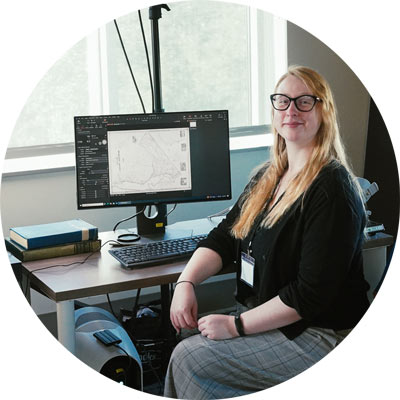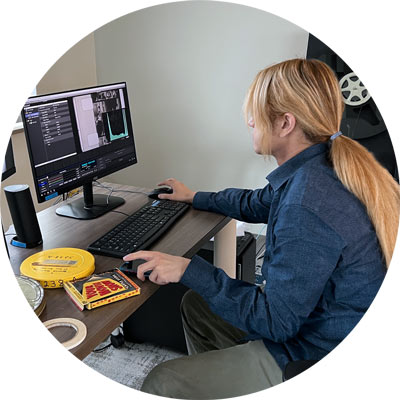
UCF’s Center for Humanities and Digital Research had a big year in 2024–25, with a long-simmering grand opening that precipitated more groundbreaking research, faculty collaborations, captivating presentations, and educational opportunities for students.

At long last, CHDR held its official grand (re-)opening this past September, in which remarks were delivered by Bruce Janz, Co-Director, CHDR; Jeffrey Moore, Dean, College of Arts and Humanities; Rachel Vacek, Associate Dean for Digital Strategies, Impact, & Visibility, UCF Libraries; and Alexander N. Cartwright, President, University of Central Florida. The university community was invited to gather, enjoy refreshments, and become acquainted with our digitization equipment—including a large format scanner as well as a film scanner. Our lab space, realized through an Infrastructure and Capacity Building Challenge Grant from the National Endowment for the Humanities, is now actively in production on a number of archival projects and engaging students in their completion.
We hosted the 10-year anniversary conference for the Florida Digital Humanities Consortium, entitled “Humanities in the Age of AI: Celebrating a Decade of Innovation.” Digital Humanities scholars and students from the entire state converged at the Center for Humanities and Digital Research to share their latest research and learn from one another. Through the year, we also hosted talks in our ongoing CHDR Presents talk series, hosting faculty members and their presentations on topics as diverse as post office murals, Bollywood, and fan studies. Professor Rosalind Beiler of History’s grant funded People, Religion, Information Networks, and Travel (PRINT) project has been hosting weekly meetings with eager student researchers in CHDR, collaborating virtually with international partners, and receiving technical expertise from CHDR’s own Brook Miller and Amy Giroux. CHDR is a place where research is conducted but also, importantly, a place where research is shared with the community.
CHDR continued work on ongoing projects and welcomed new ones this year. In November, Amy Giroux and Mike Shier traveled to Oklahoma to continue their work with the Cheyenne and Arapaho Tribes on events commemorating the unjust imprisonment of some tribal members at Fort Marion in St. Augustine, FL in the 1800s. Events were held at several important sites in Oklahoma, concluding with a symposium at the National Cowboy & Western Heritage Museum. As part of a grant with the National Park Service, CHDR also documented the events there with cameras—including one on a drone—and will be producing accessible video content for the NPS to use for education initiatives. Traveling even further away, CHDR’s Brook Miller has visited the University of Trier in Germany to deliver a talk, “Constructed Pasts and Small Stories in Digital History,” discussing the PRINT project with a truly international audience.

We also welcomed new graduate research associates in the fall through our partnership with the Texts & Technology PhD program. Over the year they worked with us, they gained experience in building websites, maintaining databases, coding, video editing, graphic design, and archival practices. All these skills serve to both enhance their education in their degree program and the kinds of projects we can work on and support in the center. One of our graduate research associates even designed striking mural art for our windows in the center, which you can always come by and see on the way to one of our public events.
Through this academic year, we have continued our mission of supporting faculty research through expertise and grant-seeking while also supporting educational opportunities for students. We look forward to another year of exciting research.
